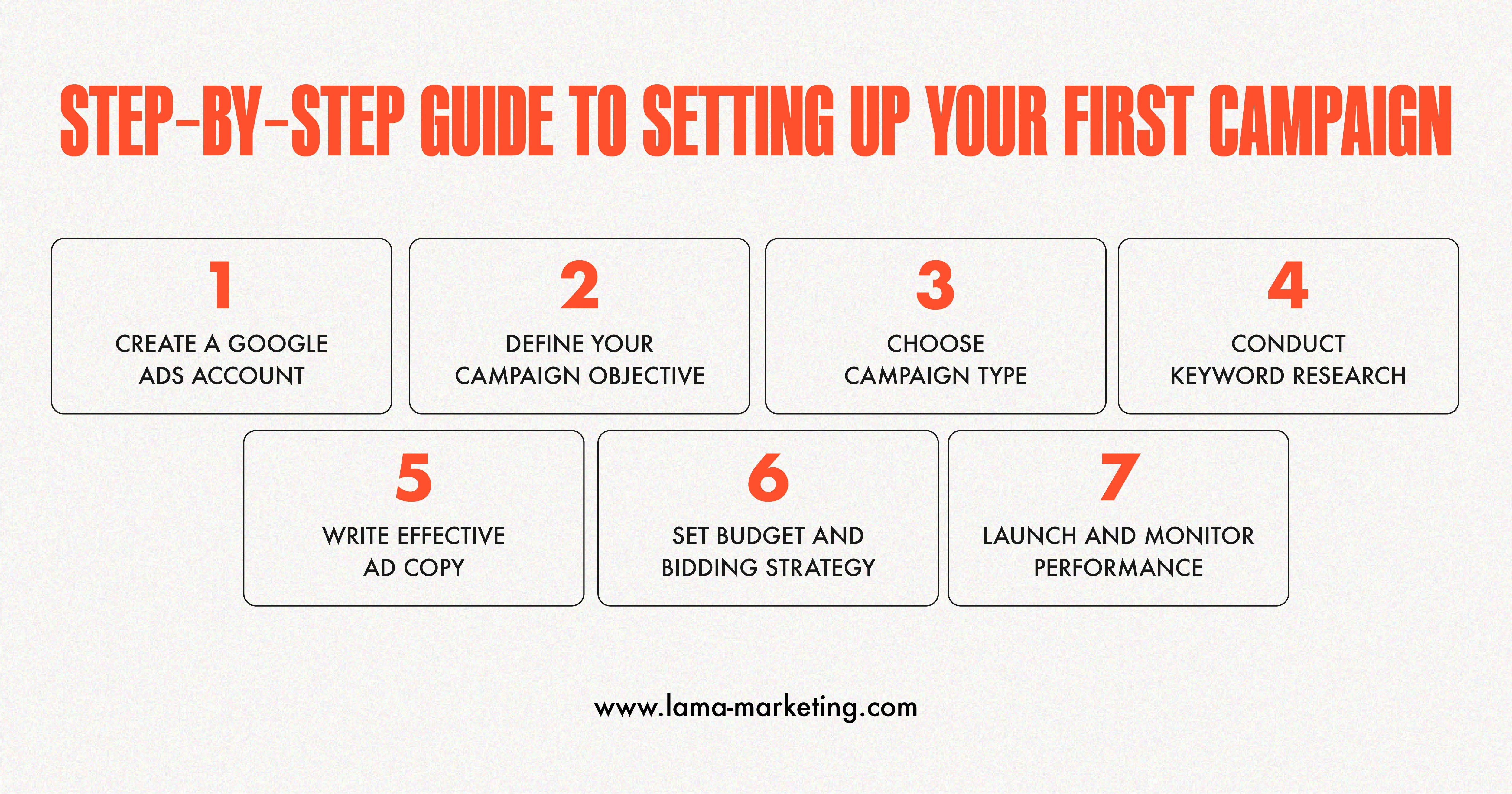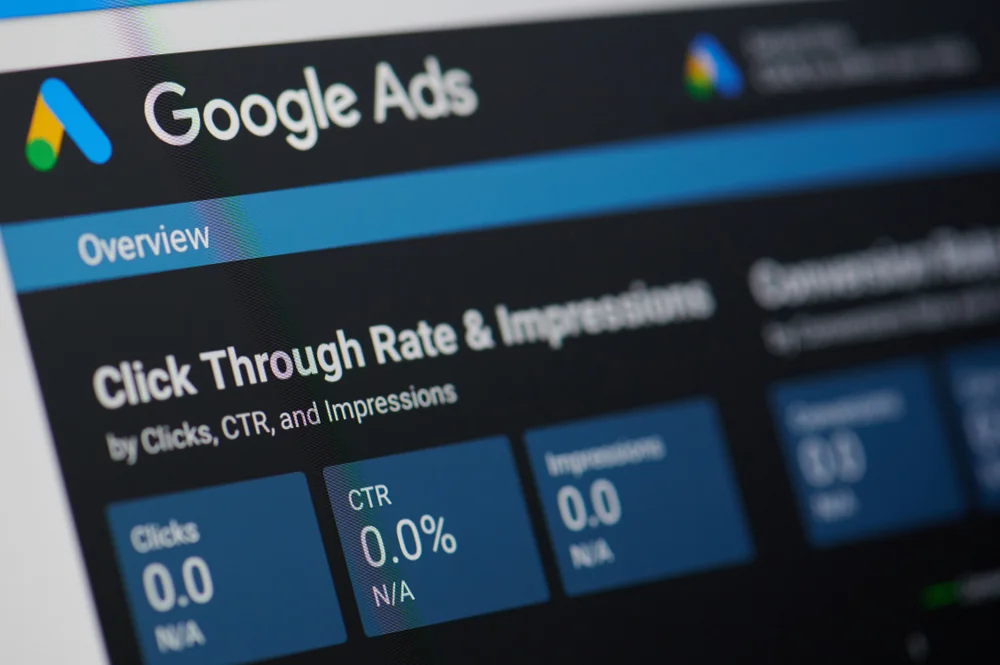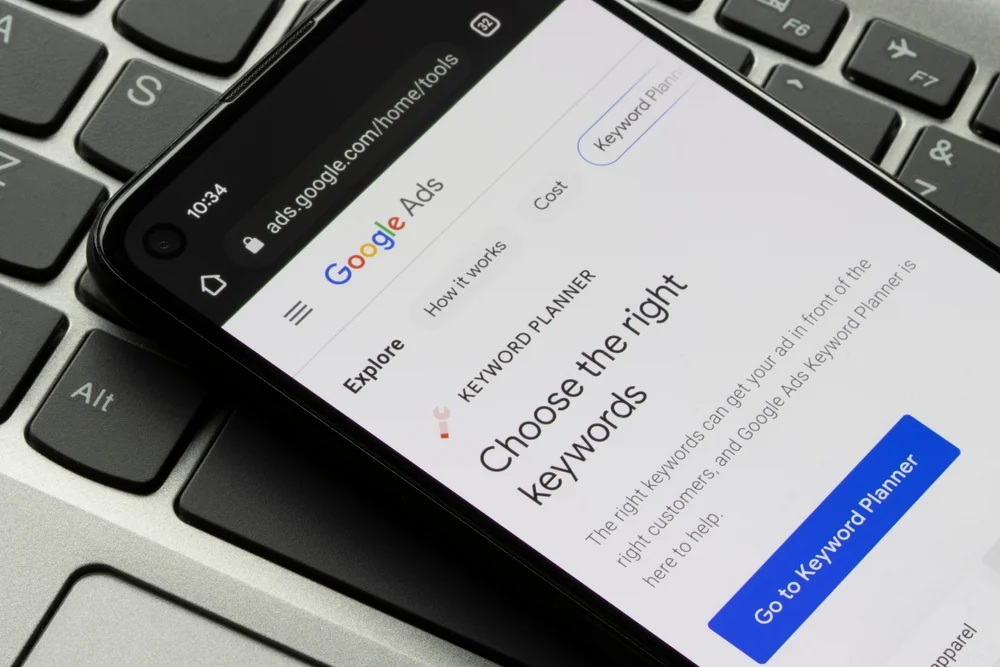Put yourself in the shoes of a consumer for a moment. If you have a need for something, you want to find it. And so you start doing research online. And if you are like most people, the chances are that you’ll head to Google. And you’re not alone.
That’s exactly why Google Ads can be such a smart tool for businesses. It puts your product, service, or solution in front of people who are already searching for it. If you’re new to the platform, don’t worry. This beginner’s guide will give you the inside scoop on what Google Ads is, how it works, and how you can start using it to grow your business.

What are Google Ads?
You likely know what Google looks like when it returns the information you are looking for. It provides several links and snippets of information to help answer your question, occasionally accompanied by some images. But these hits aren’t quite the same as Google Ads, and they show up in front of online consumers a bit differently.
Google Ads is an online advertising platform from Google that uses a pay-per-click (PPC) model, allowing businesses to display ads and only pay when someone clicks on them. It gives businesses the unique opportunity to place ads across the network. This means that you don’t pay unless someone clicks on your ad. And the cool thing is that these ads show up in different places. At the top of search results pages, on websites in the Google Display Network, across various partner sites, and even on YouTube.
There are two main types of Google Ads campaigns for you to know about.
- Search campaigns: Text-based ads that appear when someone actively searches for something specific on Google. Remember when we talked earlier about search results? These ads will appear at the top of those search results, which means your target audience is more likely to click on your ad.
- Display campaigns: Image or banner ads that show up across websites, apps, and YouTube, even if the person isn’t actively searching. Display campaigns are more visual in nature and are designed to create visual appeal and interest.
Both campaign types work in different ways but can complement each other to help you reach the right audience at the right time.
Why Use Google Ads?
We’ll be honest. Using Google Ads is totally optional and does not need to be part of your marketing strategy. In fact, there are plenty of approaches to organic marketing that can help your business get in front of the people who want to buy your products and services. But Google Ads can help you do it faster, with more control and measurable results.
And here’s why so many businesses choose it: on average, companies make $2 for every $1 they spend on Google Ads. It’s also the platform of choice for most advertisers, as between 80% to 85% of all PPC budgets go to Google Ads, and 98% of PPC professionals rely on Google Search Ads in their campaigns.
If you’re on the fence, here are a few reasons to give Google Ads a try:
- Immediate visibility on Google SERPs
- Flexible budget control
- Highly targeted campaigns (keywords, geography, demographics)
- Trackable ROI and performance metrics
It’s a smart, data-driven way to get your business in front of people who are already looking for what you offer.

Step-by-Step Guide to Setting Up Your First Campaign
If you’re like most business owners who have seen those success metrics that we shared above, we know you probably want to get started. But if you have never built a Google Ad campaign before, you might not know how to get started.
We’ve made it easy by putting it into seven easy steps.
Step 1: Create a Google Ads account
Start by visiting ads.google.com and signing in with your business Gmail account. Follow the prompts to enter your business details and billing information so you can begin creating campaigns.
Step 2: Define your campaign objective (traffic, leads, conversions, brand awareness
Google will ask what you want to achieve. Choose your main goal. Do you want to get more website visits? Perhaps your goal is all around lead generation. Whether you want to increase sales or boost awareness about your business, you need to have a strategy for what you want to achieve.
Step 3: Choose campaign type (Search, Display, Video, Performance Max)
Now it’s time to decide on the type of campaign that you want to execute. And you should base your decision on your intended campaign objective. For example, search campaigns use text ads, Display uses image banners, Video runs on YouTube, and Performance Max uses automation across Google channels. We suggest starting small and then adding additional campaign types as you get used to the platform and how everything works.
Step 4: Conduct keyword research (Google Keyword Planner basics)
Use Google’s Keyword Planner tool to find the terms your target audience is searching for. Look at search volume, competition level, and cost-per-click to choose the right keywords for your ads.
Step 5: Write effective ad copy (headlines, descriptions, CTAs)
Here is where your words really matter. Without clear, compelling headlines and descriptions that match your keywords, you won’t capture your target audience’s attention. Your goal should be to focus on benefits, keep your verbiage concise, and include a call-to-action like “Call today,” “Get a quote,” or “Shop now.”
Step 6: Set budget and bidding strategy (manual vs. automated bidding)
Decide how much you’re willing to spend daily or monthly. You can choose manual bidding for more control or automated bidding, where Google adjusts bids to meet your campaign goals. Budgets can typically start as low as $20 per day.
Step 7: Launch and monitor performance
Once everything is in place, publish your campaign. The Google Ads dashboard can help you monitor clicks, impressions, conversions, and cost. All you need to do is make adjustments as needed to improve results and maximize your return.
Best Practices for Beginners
Looks pretty easy, right? It really is. But, we’d be remiss if we didn’t share a few additional pointers to help you get started. After all, we want your Google Ads to be as successful as you do.
Here are some tips to keep in mind.
- Start small and scale as you go: There’s no official minimum budget for Google Ads, but starting with $10–$15 per day is a great way to test the waters, gather data, and adjust without overspending.
- Use negative keywords to filter out the wrong clicks: Negative keywords tell Google not to show your ad when certain words or phrases are part of a user’s search. This helps you avoid clicks from people who aren’t a good match for your offer. For example, if you own a high-end furniture store, adding “cheap” or “free” as negative keywords can prevent your ad from showing up in searches like “cheap couch” or “free furniture,” helping you focus your budget on serious buyers.
- Test different versions of your ads: Create a few variations of your headlines and descriptions. A/B testing helps you figure out what messaging connects best with your audience and improves your ad performance over time.
- Keep an eye on ad relevance and Quality Score: Google rewards well-written, relevant ads with lower costs per click (CPC). Match your ad copy to your keywords and landing page to keep your Quality Score up.
- Link your account to Google Analytics: By connecting Google Ads to Google Analytics, you’ll get deeper insights into what happens after someone clicks your ad, such as time on site, pages visited, and conversions.
Common Mistakes to Avoid
We’ve been around the block a few times and have learned a few mistakes that advertisers (that’s you) should avoid. Here’s what not to do.
- Casting too wide a net with your audience: Trying to reach everyone often means connecting with no one. Narrow your targeting to focus on your ideal customer.
- Skipping conversion tracking setup: Without conversion tracking, you won’t know which clicks are actually turning into leads or sales, making it harder to measure success.
- Overlooking mobile-friendly ads and landing pages: A large portion of traffic comes from mobile devices. If your ads or website don’t look good on a phone, users may bounce quickly.
- Letting campaigns run without regular check-ins: Google Ads isn’t a “set it and forget it” platform. Regularly review and adjust your ads to improve performance and avoid wasting budget.
Metrics to Measure Success
Whether you are running a direct mail campaign, an email campaign, or a PPC campaign, you need to be measuring some key metrics. Without metrics and a plan for measurement, you won’t be able to determine what’s working and what’s not. Basically, you’re throwing money at the wall without knowing what it’s doing for you (that said, don’t throw money at the wall).
The thing to understand is that digital marketing is all about testing and learning to see what sticks. After all, why spend money on what isn’t giving you the return on investment that you deserve?
Here are some of the metrics that you need to measure for your PPC campaigns.
- Click-through rate (CTR): This measures how often people click on your ad after they see it, which is really one of your primary goals. If people don’t click on the ad, then they aren’t really interested in what you are selling or promoting. CTR is calculated by dividing clicks by impressions and multiplying by 100 to get a percentage.
- Cost per click (CPC): This metric shows how much you’re paying, on average, for each click on your ad. Ideally, you want your CPC to be as low as possible. That said, there is no universal target as it really depends on the nature of your business.
- Conversion rate: The percentage of clicks that result in the action you want to see, such as a purchase or form submission. This metric tells you how well your ad and landing page are working together.
- Quality Score: This is Google’s internal metric that evaluates how well your ad, chosen keywords, and landing page align with one another. The higher the score the better, because this can improve your ad’s position and reduce your cost per click. Can you say win-win?
- Return on ad spend (ROAS): How much revenue you earn for every dollar spent on ads. This helps you evaluate whether your campaign is truly paying off.

Google Ads Can Provide the Return on Advertising Spend that Your Business Deserves
If you are looking for ways to reach new customers, Google Ads might be the right path forward. But you don’t have to do it alone. Many business owners and even marketers simply don’t have the time to manage everything on their plates. That’s where our team at LAMA Marketing can help. Seriously, it’s what we’re here for and happens to be something we’re pretty good at.
We have the skills and experience in working with Google Ads to help set you up for success. Need help with your Google Ads? Contact us today.



.webp)










